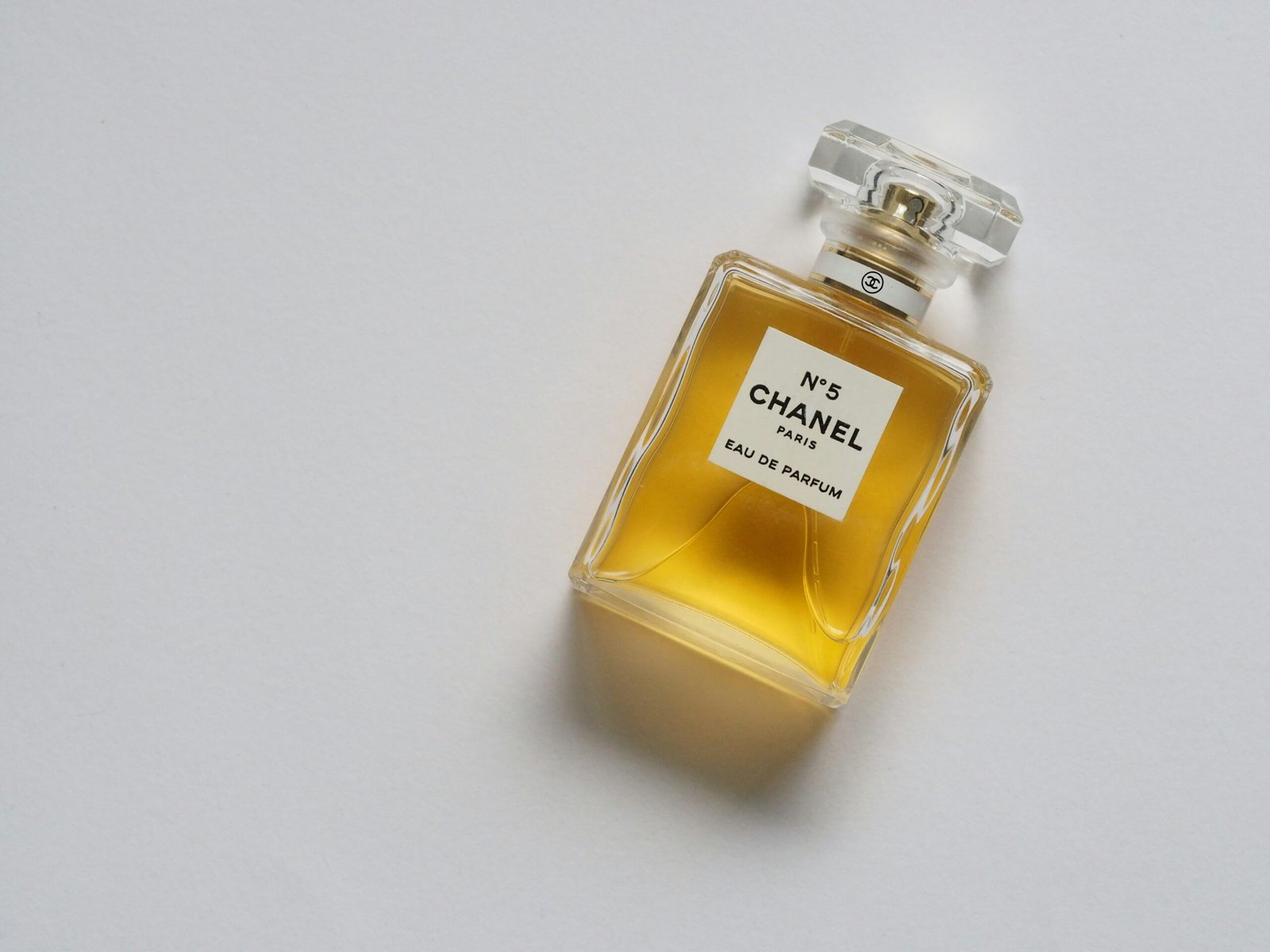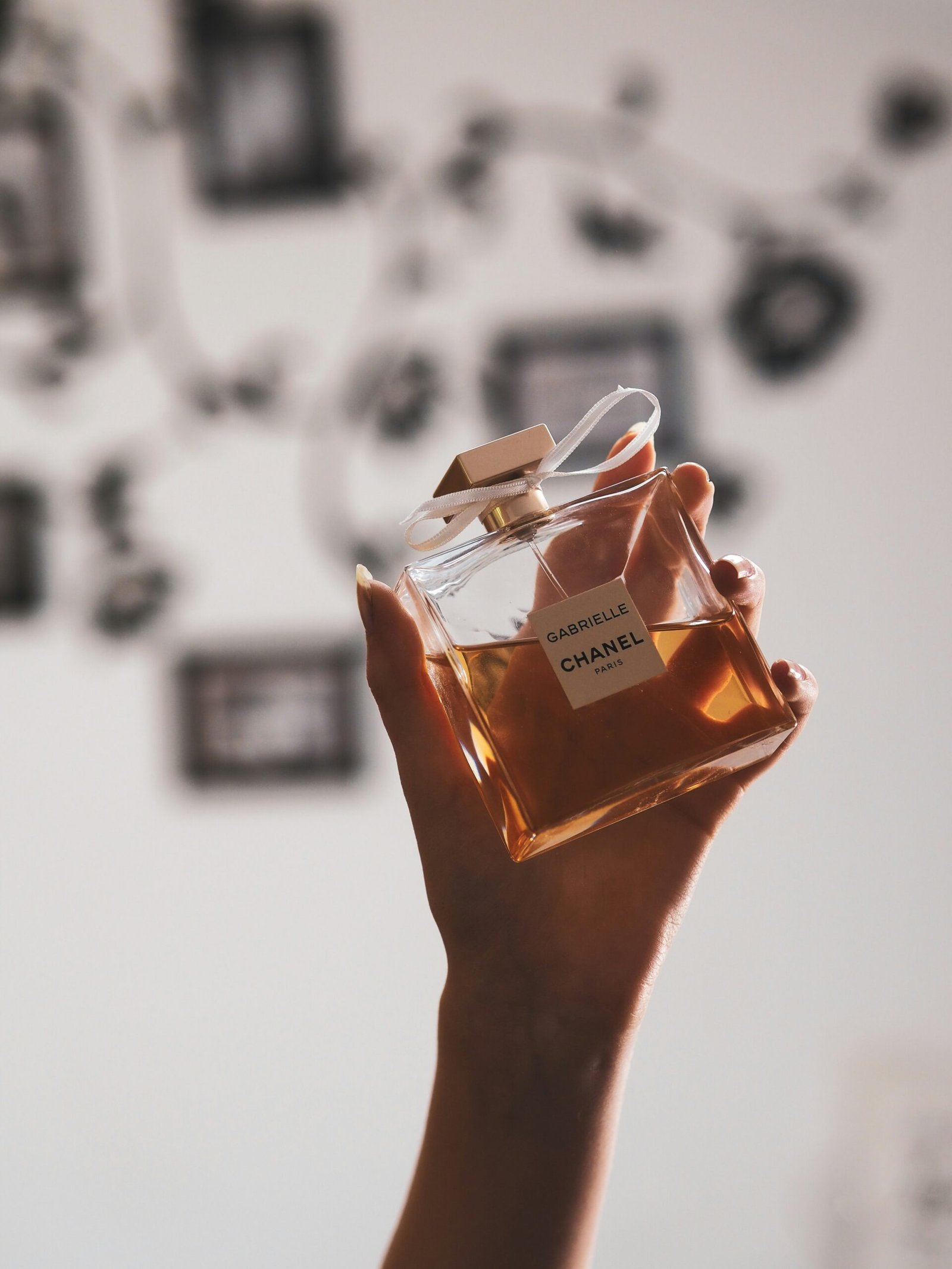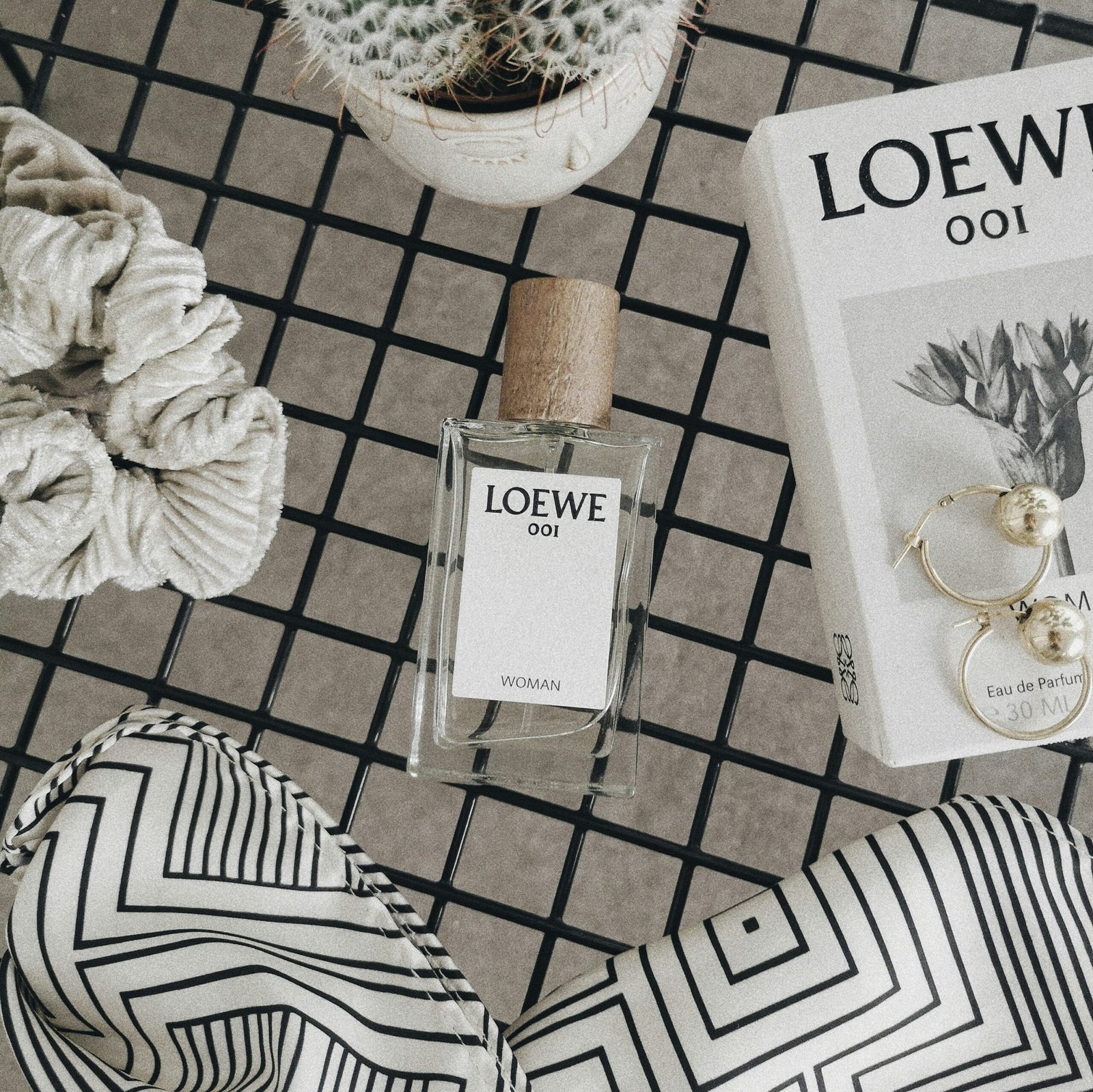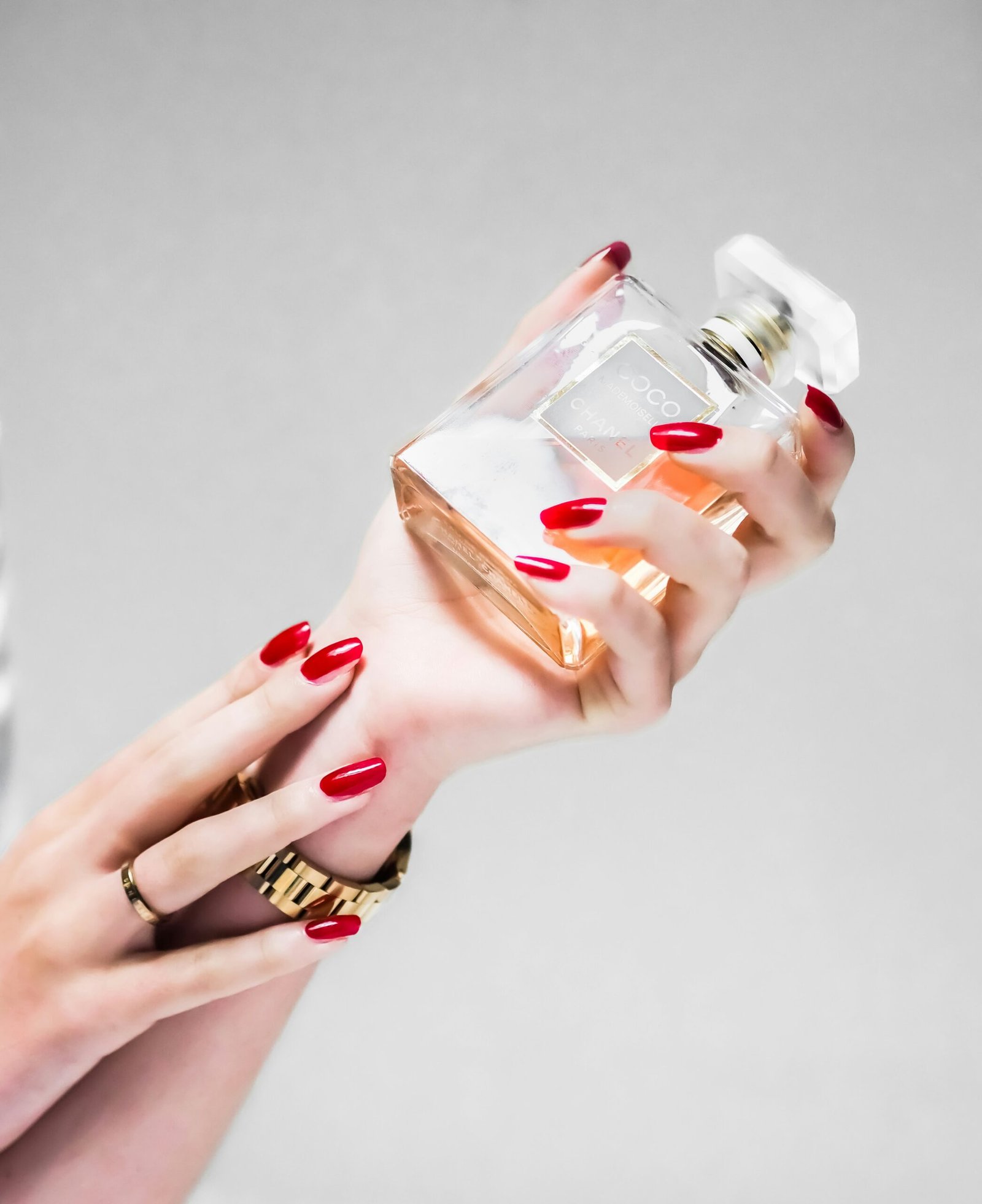Decoding Scents: Understanding Fragrance Notes and Accords
Fragrances play a pivotal role in the fashion industry, often serving as the invisible accessory that completes an outfit. They have the power to evoke emotions, revive memories, and express one’s personality. A fragrance is not merely a scent; it is an intricate composition crafted with precision and creativity. At the heart of this complexity are fragrance notes and accords, fundamental elements in the art of perfumery.
Fragrance notes are the individual components that make up a perfume. They are categorized into three layers: top notes, middle (or heart) notes, and base notes. Each layer unfolds over time, creating a multi-dimensional olfactory experience. Top notes are the initial impression, often light and fleeting, lasting only a few minutes. Middle notes emerge next, forming the core of the fragrance and lasting for several hours. Finally, base notes are the lingering scents that provide depth and longevity, often detectable long after the fragrance is first applied.
Accords, on the other hand, are blends of multiple fragrance notes that create a new, unique scent. They are the perfumer’s palette, allowing for the creation of sophisticated and harmonious compositions. An accord might mimic the scent of a natural ingredient that is difficult to extract, or it might be an entirely novel creation. These combinations are meticulously balanced to ensure that no single note overwhelms the others, achieving a seamless blend that evolves over time.
The development of a unique fragrance is a meticulous process that involves both art and science. Perfumers must have a deep understanding of the properties of various fragrance notes and how they interact with one another. They experiment with different combinations to create accords that are both innovative and appealing. This process can take months or even years, as achieving the perfect balance requires patience and precision.
In this way, fragrances contribute significantly to personal style and fashion, offering a way to express individuality and complement one’s appearance. Whether subtle or bold, a well-chosen fragrance enhances the overall impression, making it an essential element in the realm of fashion and personal grooming.
The Basics: Top, Middle, and Base Notes
Understanding the structure of a fragrance is fundamental to appreciating its complexity and depth. Fragrances are typically composed of three layers: top, middle, and base notes. Each layer plays a critical role in the overall scent profile and its longevity on the skin.
The top notes are the initial scents that one perceives upon applying a fragrance. These notes are usually light and refreshing, designed to make a strong first impression. Common top notes include citrus, light fruits, and herbs. For example, the iconic Chanel No. 5 opens with bright top notes of lemon and bergamot, which are immediately noticeable but tend to dissipate quickly, typically within 15 to 30 minutes.
As the top notes fade, the middle notes, or heart notes, emerge. These form the core of the fragrance and are more robust and enduring than the top notes. Middle notes often include floral, fruity, or spicy elements, providing the fragrance with its main character. For instance, the heart of Dior’s J’adore features a harmonious blend of jasmine, rose, and ylang-ylang, which develops as the initial citrus top notes fade.
Finally, the base notes are the foundation of the fragrance and the longest-lasting aspect. These notes are rich and deep, anchoring the scent and providing longevity. Common base notes include woods, amber, musk, and vanilla. A classic example is Tom Ford’s Black Orchid, which has a luxurious base of patchouli, dark chocolate, and sandalwood, lingering on the skin for hours, even after the top and middle notes have evaporated.
The interplay between these three layers creates a dynamic and evolving fragrance experience. By understanding the roles of top, middle, and base notes, one can better appreciate the artistry involved in crafting a fragrance and select perfumes that align with personal preferences for scent profiles and longevity.
Understanding Fragrance Families
Fragrance families serve as the foundation for categorizing perfumes, each offering a unique olfactory experience. The primary fragrance families are Floral, Oriental, Woody, and Fresh, each distinguished by specific notes and characteristics that appeal to various preferences and occasions.
The Floral fragrance family is quintessentially feminine and is characterized by the presence of flower notes such as rose, jasmine, lily, and violet. These fragrances often evoke a sense of romance and are ideal for daytime wear and special events. Floral fragrances can range from light and airy to rich and opulent, making them versatile for different moods and settings.
The Oriental fragrance family is known for its exotic and sensual scents. These fragrances often include spicy and warm notes such as vanilla, cinnamon, clove, and incense. They also incorporate rich floral or woody undertones. Oriental fragrances are perfect for evening wear and colder seasons, providing a mysterious and alluring aura.
Woody fragrances are grounded and masculine, often featuring notes of sandalwood, cedarwood, vetiver, and patchouli. These scents are earthy and sophisticated, making them suitable for both men and women who prefer a more robust and enduring fragrance. Woody scents are versatile, fitting well with both casual and formal occasions.
The Fresh fragrance family is invigorating and clean, often incorporating notes such as citrus, green, and aquatic elements. These scents are light and refreshing, perfect for daytime wear and warmer weather. Fresh fragrances are ideal for those who seek a crisp and energetic aroma that is not overpowering.
Understanding these fragrance families can significantly aid consumers in selecting their ideal perfumes. By identifying which family resonates with their personal preferences and the occasions they frequent, individuals can make more informed choices, ensuring the fragrance they choose complements their lifestyle and enhances their personal scent profile.
The Role of Accords in Perfumery
Accords are fundamental to the art of perfumery, acting as the backbone of any sophisticated fragrance. In essence, an accord is a blend of multiple fragrance notes that come together to create a new, harmonious scent. This complex synthesis is meticulously crafted by perfumers who balance various elements to achieve a unified and pleasing aroma. Unlike single notes, which can be straightforward and linear, accords offer depth and richness, enhancing the olfactory experience.
Creating an accord involves a precise process of blending different notes, each contributing its unique characteristics to the overall composition. These notes are chosen based on their ability to complement each other, resulting in a scent that is greater than the sum of its parts. For instance, a floral accord might combine rose, jasmine, and lily of the valley to produce a lush and enveloping bouquet, while a woody accord might blend sandalwood, cedar, and patchouli for a warm and grounding effect.
Some accords have become iconic in the world of perfumery, setting the standard for entire fragrance families. The Chypre accord, for example, is distinguished by its combination of citrus top notes, a floral heart, and a mossy, woody base. This classic structure has inspired countless variations and remains a pillar of sophisticated perfumery. Similarly, the Gourmand accord is characterized by sweet, edible notes like vanilla, chocolate, and caramel, evoking a sense of indulgence and comfort. The Fougere accord, on the other hand, blends lavender, oakmoss, and coumarin to create a fresh, green scent often found in men’s fragrances.
Understanding accords is crucial for appreciating the complexity and artistry of fragrances. These intricate blends not only define the character of the perfume but also influence its longevity and sillage. By mastering the creation of accords, perfumers can craft scents that are both captivating and enduring, leaving a lasting impression on those who encounter them.
How to Choose the Right Fragrance for You
Choosing the right fragrance is a deeply personal journey that blends art and science. Your skin chemistry, personal taste, and lifestyle all play crucial roles in determining which scent will become your signature. Understanding these elements can help you navigate the complex world of fragrances with confidence.
One of the primary considerations when selecting a fragrance is your skin chemistry. Each individual’s skin has unique properties that can alter how a fragrance smells. A perfume might have a different scent on your skin compared to how it smells in the bottle or on someone else. Thus, it’s essential to test fragrances directly on your skin. Apply a small amount to your wrist or inner elbow and wait for a few hours to observe how the fragrance evolves. This process, known as the dry-down, reveals the fragrance’s true character, as top notes dissipate and heart and base notes emerge.
Personal taste is equally important in choosing a fragrance. Reflect on the scents you naturally gravitate towards in your daily life. Do you prefer the freshness of citrus, the warmth of spices, or the sweetness of florals? Understanding your scent preferences can significantly narrow down your options. Additionally, consider fragrances that align with your lifestyle. For instance, a light, airy scent might be more suitable for a busy professional environment, while a richer, more intense fragrance could be ideal for evening wear or special occasions.
Seasonal variations also influence fragrance choices. Lighter, fresher scents are often preferred in the warmer months, as they evoke a sense of coolness and vitality. Conversely, in the colder seasons, richer, more robust fragrances can provide a comforting and warming effect. Experimenting with different scents throughout the year can enhance your sensory experiences and ensure your fragrance collection remains versatile.
Lastly, when testing perfumes, avoid trying too many at once, as this can overwhelm your senses. Limit yourself to testing three to four fragrances at a time, allowing each one to fully develop on your skin before making a decision. By taking the time to understand how different fragrances interact with your skin and personal preferences, you can confidently select a scent that truly resonates with you.
Fragrance Layering and Customization
Fragrance layering is an art form that allows individuals to craft a unique and personalized scent by combining multiple fragrances. This technique involves the strategic application of different scents, often starting with a base fragrance and then adding other complementary notes to enhance and customize the overall aroma. The concept of fragrance layering is akin to creating a symphony of scents, where each layer contributes to the final harmonious composition.
One effective method for fragrance layering is to use matching body products. Many fragrance lines offer a range of products such as body lotions, shower gels, and creams that carry the same scent. By starting with a scented body lotion, you create a base that helps the fragrance last longer and blend seamlessly with the subsequent layers. Following this with a matching shower gel further intensifies the fragrance, creating a more potent and long-lasting effect.
Experimenting with complementary notes is another popular technique. For example, if your base fragrance has a warm, woody note, you might layer it with a lighter, floral scent to add complexity and depth. The key is to start with a dominant fragrance and then add lighter, more subtle layers. This can be done by applying different perfumes in succession or even mixing a few drops of each fragrance in a small container before application. The result is a customized scent that is entirely your own.
The benefits of fragrance customization extend beyond merely smelling good. A personalized fragrance can evoke memories, enhance your mood, and even boost your confidence. It allows you to express your individuality and create a signature scent that stands out. Whether you are drawn to the freshness of citrus, the earthiness of musk, or the sweetness of vanilla, fragrance layering offers endless possibilities for creating a scent that is uniquely you.
Caring for Your Fragrances
Proper care and storage of fragrances are essential to maintaining their quality and longevity. Perfumes are delicate compositions that can be easily altered by external factors such as light, temperature, and humidity. To ensure that your favorite scents remain as fresh and vibrant as the day you first opened them, it is crucial to understand how these elements impact fragrance stability and what steps you can take to protect your collection.
Light exposure is one of the primary culprits in the degradation of perfumes. Ultraviolet (UV) rays can break down the chemical compounds in a fragrance, leading to a change in color and scent. To prevent this, store your perfumes in a cool, dark place, away from direct sunlight. A drawer or a closed cabinet can provide the ideal environment for your bottles.
Temperature fluctuations can also adversely affect your fragrances. High temperatures can accelerate the evaporation of the perfume’s alcohol content, causing the scent to weaken over time. Similarly, extreme cold can alter the fragrance’s composition. Aim to keep your perfumes at a consistent, moderate temperature, ideally between 15 to 20 degrees Celsius (59 to 68 degrees Fahrenheit).
Humidity is another factor to consider when storing fragrances. Excess moisture in the air can interact with the perfume’s ingredients, potentially leading to spoilage. To mitigate this risk, avoid storing your perfume bottles in the bathroom, where humidity levels are typically higher. Opt for a drier location, such as a bedroom or a dressing table.
In addition to proper storage, there are a few tips for extending the lifespan of your scents. Always ensure that the bottle cap is securely fastened to prevent unnecessary exposure to air. Consider decanting your perfumes into smaller, travel-sized bottles to minimize the air space in the original container, which can help preserve the fragrance’s potency. Lastly, handle your bottles with care to avoid any accidental spills or breakages.
By following these guidelines, you can significantly extend the life of your fragrances, ensuring that each spritz remains as delightful as the first. Proper care and storage will allow you to enjoy the full depth and complexity of your favorite scents for years to come.
In the realm of olfactory delights, enthusiasts often seek to deepen their understanding of fragrance composition, selection, and maintenance. To aid in this journey, we have compiled a list of 25 essential tags that encapsulate the essence of our discussion on fragrance notes and accords. These tags are designed to enhance the discoverability of content for fragrance aficionados, allowing them to navigate through a wealth of information easily.
Share this content:




 Italiano
Italiano English
English Español
Español